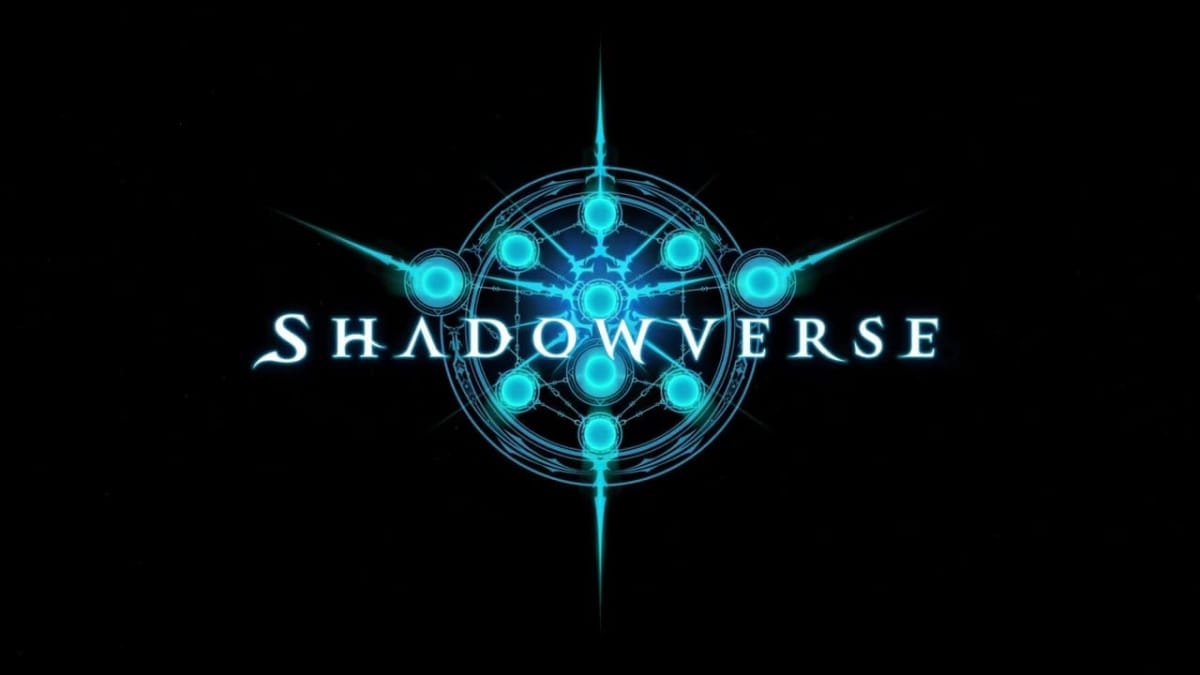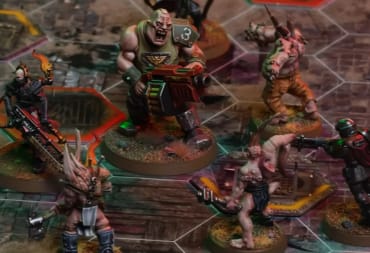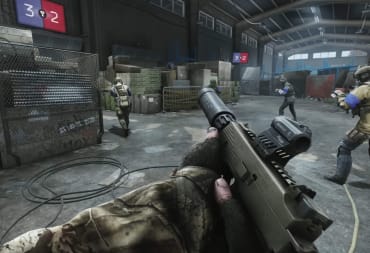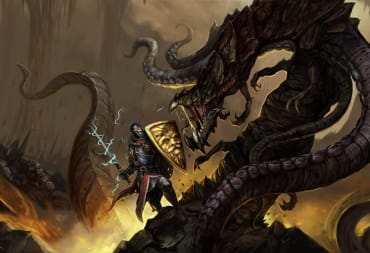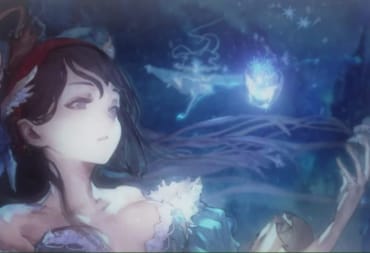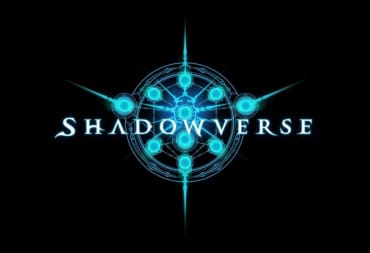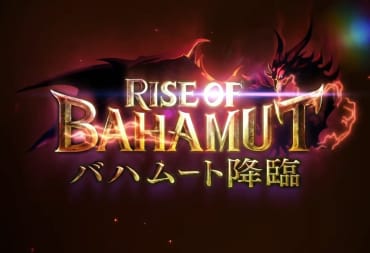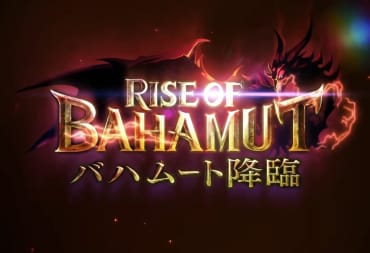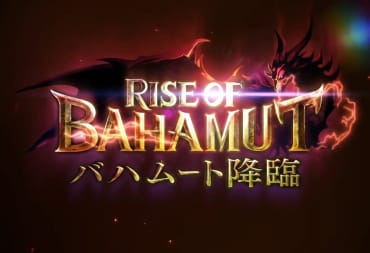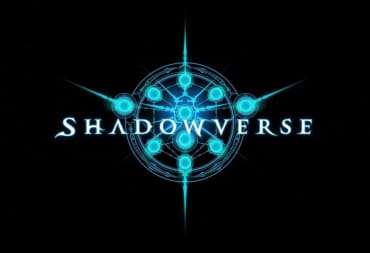This pre-Rise of Bahamut Shadowverse guide lists neutral cards that can be run in a variety of decks to help fill in for weaknesses and generally allow the deck to be more versatile. This guide does not cover neutral cards, such as Path to Purgatory, which are mainly used in a single deck type, but instead seeks to discuss cards that can be found in a variety of Shadowverse decks. To learn more about how to play Shadowverse, check out our Shadowverse Competitive Primer series.
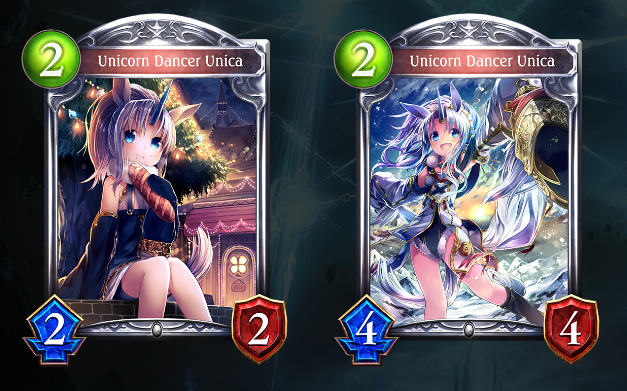
Unevolved: At the start of your turn, restore 2 defense to your leader.
Evolved: At the start of your turn, restore 2 defense to your leader.
Unicorn Dancer Unica is one of the most commonly teched cards and can be found especially in decks that fear early game aggressiveness. As a two point 2/2, this card is on par with class-specific cards in terms of stats, whereas many neutral cards are somewhat lacking. Unica's ability to restore two defense at the start of the turn forces aggressive decks to turn their focus on her, as any damage less than three is restored at the start of the next turn. Most aggressive decks will choose to take her out before she can heal, but her stats allow her to trade evenly with most early game followers, turning her into a pseudo-Ward that can help maintain board control. Against non-aggressive decks, she is not as helpful, but restoring defense is never useless, though the importance of her effect usually falls off late game. As a silver rarity card, she is quite cheap to craft, too. Unica is a must-run in decks that have trouble with aggressive decks and is especially beneficial with leaders that lack other heals or Wards to defend against aggressive playstyles.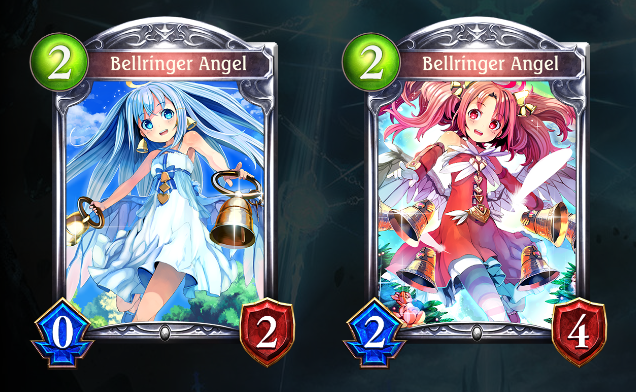
Unevolved: Ward. Last Words: Draw a card.
Evolved: Ward. Last Words: Draw a card.
Bellringer Angel is often remembered by her trademark cry when she is played: "Ding-dong!" It may seem strange that a card with the seemingly useless stat line of 0/2 sees play. Though Bellringer Angel's Ward could serve the same anti-aggro purpose as Unicorn Dancer Unica's effect, the zero attack means that Bellringer Angel would just act as a punching bag. Bellringer Angel has a different purpose than Unica, however; where Unica tries to hold out against aggressive decks, Bellringer Angel stalls for time in general, while setting up for a better late-game. Bellringer Angel is most often found in late-game oriented decks that enjoy having a large hand, especially some Runecraft and Dragoncraft archetypes. For decks that can maintain some board control versus aggressive decks, Bellringer Angel is a good choice to stall out even more time while also maintaining card draw. While not as prolific as Unicorn Dancer Unica despite the same rarities, Bellringer Angel is still a useful tech card to stall for time while gaining draw power.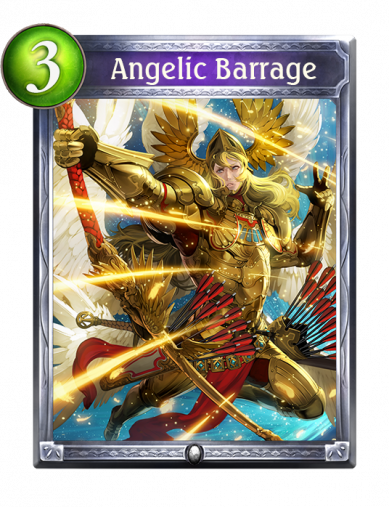
Deal 1 damage to all enemies.
Angelic Barrage, like Unicorn Dancer Unica, is a card run to counter aggressive decks, many of which rely on a flood of one defense followers to wear down the opponent. This card can be used past turn three, right when aggressive decks are establishing a significant board presence, to clear the board and force the other player to backpedal. Angelic Barrage also damages the opposing leader as well, which can help against any sort of deck. Even not against purely aggressive decks, Angelic Barrage can be useful if a player sets the opposing followers to one defense through efficient trades, then clears the entire field. Like the last two cards, this card is silver and can be crafted easily, making it a great option for decks that are weak in the early game. This can be run alongside Unica if the deck really fears early game aggression, or by itself as a board clearing tool. Angelic Barrage is a little expensive but is a good active way to maintain the board against aggressive decks.
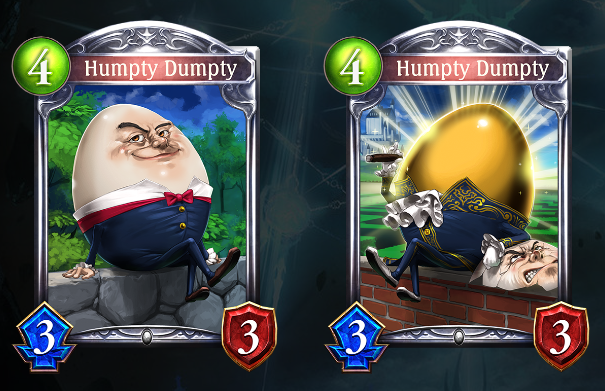
Unevolved:
Evolved: Evolve: Deal 3 damage to all followers.
Humpty Dumpty barely makes it onto this list, as it less often run in well-designed decks. Nevertheless, it is an cheap-to-craft Silver card that offers a useful effect, though this comes at the cost of an Evolve. On turn four, three damage to all followers is almost always a board clear, especially against aggressive Shadowcraft, Bloodcraft, Forestcraft, and Swordcraft variants. Though Evolves are important resources, using one to remove a lot of damage from the board can be helpful as well. This card is a good stand in for decks with an already powerful late game, but struggle against large early game boards, such as Dragoncraft and Spellboost Runecraft. Without its Evolve effect, Humpty Dumpty is an inefficient four point 3/3, though, so it's almost definitely not worth running more than one per deck. Humpty Dumpty is not as universal or useful as the other tech cards listed here, but for new players without a lot of cards at their disposal, he may be worth tossing in a few decks to function as a board clear and prepare for a strong late game.
Unevolved: Fanfare: Destroy a follower, and then return it to play.
Evolved:
Urd's effect, at first, seems like it does very little. However, there are actually many benefits to this interesting effect. Returning a follower to play refreshes Storm and Rush, though it will not trigger Fanfare effects. The destroy effect also triggers Last Words without actually removing the follower, allowing a doubling up on good Last Words effects. Because this card can also target opposing followers, it can remove their buffs, including ones from Evolution, and return them to play as their original form. Urd is most commonly seen in aggressive decks with Storm, however, most notably aggressive Havencraft decks, as, playing her on a Storm follower allows double damage to be dealt, even more if the reincarnated follower is Evolved. Urd is very useful in decks that run strong Last Words or many Storm followers as her ability effectively doubles their effects and she can also weaken opposing followers in a pinch.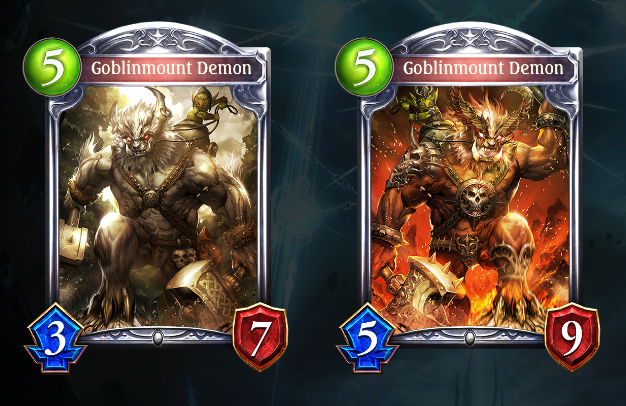
Unevolved: Ward. Fanfare: Deal 3 damage to all other allied followers.
Evolved: Ward.
Goblinmount Demon is a +1/+1 upgrade on the similarly valued Angelic Sword Maiden but has the negative effect of dealing three damage to all allied followers. Nevertheless, this card is a common tech in many control decks, functioning as a hard stop to aggressive deck's followers. It has the second highest defense of any Ward followers and comes far earlier than other seven point defense followers. The downside of playing it can be counteracted by having an empty board or trading the board away, which may not be too difficult for the control type decks this card is run in, especially around turn five. This card is more often run than Shield Maiden because, Unevolved, it does not lose to the many four attack followers after they are Evolved on turn five. If Evolved, this card has a very significant five attack that can often help clear opposing boards. Though it loses to the commonly run Dance of Death in aggressive decks, Goblinmount Demon can still survive as a powerful stopping block against aggressive decks, as many have trouble overcoming its significant stats.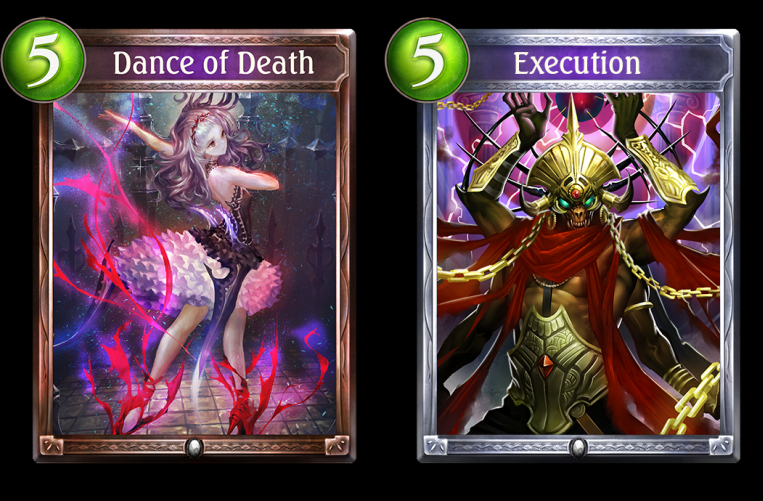
Execution: Destroy an enemy follower or amulet.
Dance of Death: Destroy an enemy follower. Deal 2 damage to the enemy leader.
Execution and Dance of Death are the two neutral removal cards which all other removals are compared against. They standardize the basic cost of removal at five. Out of these two, Dance of Death is more often run as it deals two damage to the opposing leader along with the follower removal, whereas Execution does not, though it can be applied to both amulets and followers. Removing amulets can be helpful versus decks such as Elana's Prayer Havencraft but is usually an inefficient play, since Execution is five points compared to the cost of the amulet, and amulet removal is actually bad versus countdown amulets in Havencraft, since it activates their effects which count as Last Words. Hard removal is useful in many situations, and while these cards are not staples in every deck, they can definitely help many decks deal with a variety of threats.
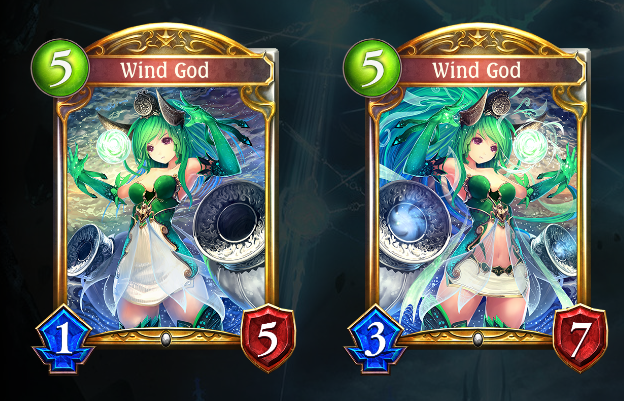
Unevolved: Fanfare: Give +1/+0 to all allied followers. At the start of your turn, all allied followers gain +1/+0.
Evolved: At the start of your turn, all allied followers gain +1/+0.
Wind God is a powerful five point follower play not only provides support to a well developed board, but is also often a must-remove threat when it is played. Often, she is run in board flooding aggressive decks, such as aggressive Swordcraft, Bloodcraft and Forestcraft variants. The fact that her Fanfare continues as a persistent effect means she rivals alternative, class-specific attack boosters such as Blessed Fairy Dancer and Sage Commander. Wind God's effect can also help with board control, and clearing the opponent's board means they may have to use removal or an Evolution to take down this card. Wind God provides powerful attack boosts and is surprisingly good at surviving, especially with an Evolution, making it a difficult to play around threat in aggressive decks that manage to fit it in.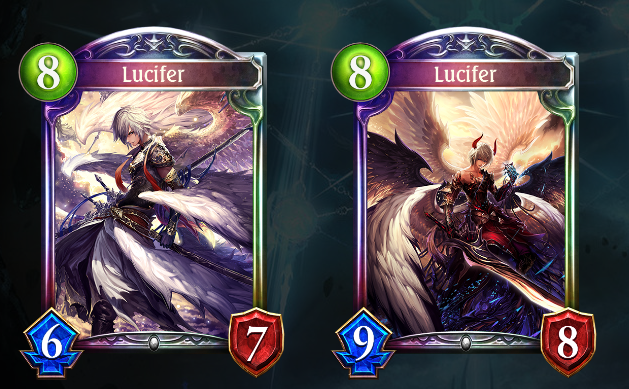
Unevolved: At the end of your turn, restore 4 defense to your leader.
Evolved: At the end of your turn, deal 4 damage to the enemy leader.
Lucifer's high cost is justified by good stats and great effects, but also means it is mainly run in late game focused control decks. Still, in those decks, this expensive legendary card provides very powerful utility. Outside of the significant 6/7 stat line, Lucifer can seal the deal versus aggressive match ups with a four defense restore each turn, that begins the turn he is played. Aggro decks usually have trouble getting past this card without hard removal, especially if they have run out of Evolves late game. However, if Evolved, he can also serve as a powerful offensive presence, not only providing a massive 9/8 follower but also dealing an unavoidable four damage to the opponent each turn. While four damage by itself might not finish games, it is far more threatening when combined with an Evolved Lucifer's massive offensive strength. Lucifer is a versatile card that can both defend against aggressive decks and be a massive offensive presence, depending on whether or not he is Evolved; even outside of his effect, he offers a strong stat line to threaten the opponent.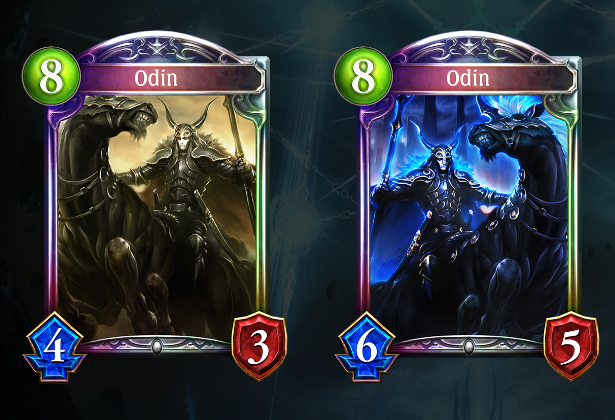
Unevolved: Fanfare: Banish an enemy follower or amulet.
Evolved:
Odin's 4/3 stat line is not worth eight points, but its position as the only non-situational Banish effect in the game is. Like Lucifer, Odin's cost means he is really only worth running in control decks that attempt to win late-game, but among those decks, he is one of the most common tech cards out there. Not only does he absolutely guarantee removal, he also establishes a solid enough board presence, which can be a little threatening if the opponent has no way to remove Odin, which may be a common occurance in the exhausted late game. More importantly, Odin can deal with threats such as Enstatued Seraph and a single Path to Purgatory, buying important time to overwhelm the opponent or removing one of their win conditions. Though that is an extreme scenario, Odin is still a powerful and common tech card that earns its place by offering absolute, unconditional removal of any card in the game, which is a very dangerous late-game play.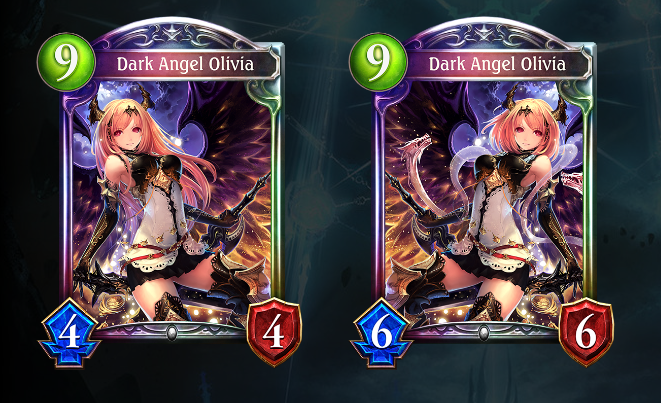
Unevolved: Fanfare: Increase your evolution points to 3.
Evolved:
Dark Angel Olivia is a nine point follower play with only 4/4 in stats, but, like Odin, she is not played for her stats, but rather, for her incredible effect. By turn nine, even in a control versus control match up, Evolution points will probably be exhausted. Dark Angel Olivia can swiftly change the tide of a game by replenishing three Evolution points, though, oftentimes, she will be one of the Evolution targets in order to maintain some semblance of board control. Though Evolutions can be broadly said to be +2/+2 in stats, meaning Olivia could technically be a 10/10, that doesn't quite cover how powerful her effect is. The Rush granted by Evolution is a huge benefit in maintaining late game board control, and any unplayed Evolve effects can still be played for full benefit. Dark Angel Olivia is often a general purpose game-finisher for control decks; while she does not end the game by herself, it is difficult to face the sudden onslaught of three regenerated Evolution points on turn nine.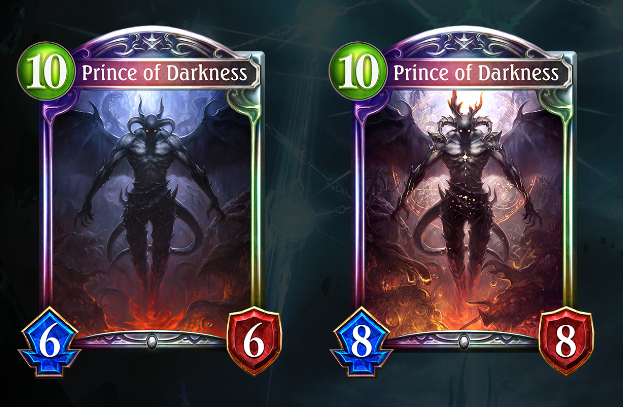
Unevolved: Fanfare: Replace your deck with an Apocalypse Deck.
Evolved:
As with the last three cards mentioned, Prince of Darkness is a high point cost legendary card meant to be played in late game control decks. Like Dark Angel Olivia, this card is a late game finisher, but unlike Olivia, it is both more absolute and more difficult to play. While Olivia herself can be used to maintain board control, which is important in the late game when there are many powerful followers being played, Prince of Darkness cannot actively take back control of the board unless the player has an Evolution available, which is unlikely on turn ten unless Dark Angel Olivia was played earlier. Prince of Darkness attempts to make up for this loss of momentum by giving the player a powerful Apocalypse deck. This deck consists of three five point 13/13s, three six point 8/8s with Storm, three copies of a seven point card that deals seven damage anywhere on the opponent's board and restores seven defense, and one copy of a ten point card that reduces the opposing leader's health to one. These are all overwhelming cards and difficult to play around; most of the time, the opponent's only hope is to beat the player down before the cards get out of hand. Nevertheless, given the slowness of the five point 13/13s and playing Prince of Darkness himself, that's not always an impossible feat, though not removing a follower risks the chance of losing immediately to the ten point spell if there are no Wards up. Prince of Darkness is a useful way for control based late game decks to have an inevitable win condition, but it requires careful play to actually pull off effectively due to the chance of losing momentum.As of now, these are some of the most common and useful neutral cards that can be seen in the Shadowverse metagame. The Rise of Bahamut expansion, like the Darkness Evolved expansion, will definitely introduce many new tech cards that will join the ranks of the old to change the shape of the meta. As for now, these cards are prominent as being neutrals that are worth running in many deck archetypes, oftentimes for their unique effects and ability to cover deck's weaknesses.
Have a tip, or want to point out something we missed? Leave a Comment or e-mail us at tips@techraptor.net
